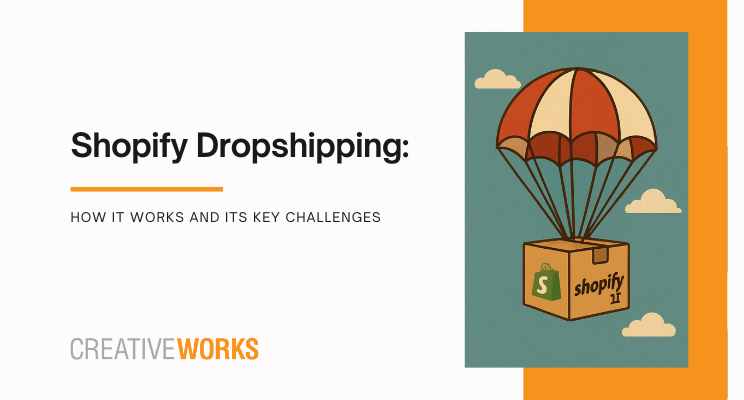The term “dropshipping” is one of the most frequently discussed topics in e-commerce. As a business model that removes the need for inventory management, it attracts significant attention from new and established entrepreneurs alike. Paired with a powerful platform like Shopify, it offers a distinct approach to online retail.
But what exactly is Shopify dropshipping, how does it function, and what are the operational realities involved?
This article will provide a neutral, informative overview of the dropshipping model. We will break down its mechanics, the typical steps for setup on the Shopify platform, and explore the significant operational challenges that businesses using this model often face—challenges where professional site optimization becomes critical.
The Dropshipping Business Model Explained
At its core, dropshipping is a retail fulfillment method. A business operating on this model—the dropshipper—does not own or store the inventory it sells. Instead, it acts as a storefront and a marketing entity.
The process typically functions as follows:
- A customer purchases a product from the business’s online store.
- The business receives the payment and forwards the order details to a third-party supplier (a manufacturer, wholesaler, or fulfillment house).
- The supplier then packages and ships the product directly to the end customer.
- The business’s profit is the difference between the retail price charged to the customer and the wholesale price paid to the supplier.
For this model, Shopify is a widely used platform due to its robust e-commerce infrastructure, extensive app marketplace, and scalability.
Typical Steps for Launching a Dropshipping Store on Shopify
Setting up the technical side of a dropshipping store is a structured process. For businesses that choose this model, the foundational steps generally include:
- Account and Plan Setup: A Shopify account is created, and a suitable subscription plan is selected.
- Niche and Product Sourcing: The business identifies a market niche and sources products from supplier databases.
- Supplier Integration: A dropshipping app (such as DSers, Zendrop, or Spocket) is installed on the Shopify store to connect it with suppliers and automate order forwarding.
- Storefront Build: A theme is chosen and customized. Products sourced via the app are imported, and product pages with descriptions and images are created.
- Configuration: Payment gateways, shipping rate logic, and standard policy pages (Returns, Privacy, etc.) are configured before the store goes live.
While these steps can be completed relatively quickly, launching the store is only the beginning. The operational phase reveals the model’s most significant hurdles.
Common Operational Challenges in the Dropshipping Model
The accessibility of the dropshipping model creates an intensely competitive environment. Success is often determined not by the initial setup, but by how effectively a business can navigate the following challenges.
1. Establishing Professionalism and Trust
Because many dropshipping stores can source from the same suppliers, the products themselves are often not a unique differentiator. Customers in 2025 are highly adept at identifying generic, low-effort websites. A lack of professional polish, inconsistent branding, or low-quality product images can create a significant “trust deficit,” leading potential customers to abandon the site. For a business to stand out, it must cultivate a highly professional and trustworthy online presence.
2. Ensuring Site Performance and Speed
Website loading time is a critical factor in any e-commerce venture. For dropshipping, where profit margins can be thin, every visitor counts. A slow Shopify dropshipping store speed—often caused by large image files, an overabundance of apps, or inefficient theme code—can lead to high bounce rates. If a page takes more than a few seconds to load, a potential customer is likely to leave, and the marketing investment to get them there is lost.
3. Optimizing for Conversions
Attracting traffic to a store is a separate discipline from converting that traffic into sales. Many businesses find they can generate clicks but struggle with a low conversion rate. This issue is often rooted in the website itself: a confusing navigation, a clunky mobile experience, or a complicated checkout process can all deter a customer from completing a purchase. A store must be meticulously optimized to guide a user from landing page to “thank you” page with as little friction as possible.
The Role of Professional Shopify Optimization
Navigating the challenges of site speed, trust, and conversion is not unique to dropshipping, but the competitive nature of the model makes them especially critical.
While the foundational setup of a Shopify store is straightforward, achieving the level of performance and professionalism required to operate effectively in a crowded market demands specialized technical expertise. This is where Shopify optimization becomes essential.
At CreativeWorks, we are experts in elevating the performance and credibility of Shopify websites. We don’t manage dropshipping logistics; we focus on refining the e-commerce engine itself. Our services are designed to solve the very issues that limit a store’s potential:
- Performance and Speed Optimization: We analyze and optimize your store’s theme, apps, and media to ensure fast loading times, providing a superior user experience that keeps customers engaged.
- Conversion Rate Optimization (CRO): We enhance your store’s layout, mobile responsiveness, and checkout process to build trust, reduce friction, and increase the likelihood of a sale.
- Technical SEO and Health: We ensure your site is technically sound, giving you a strong foundation to compete for visibility in search engine results.
Whether you run a dropshipping business or a traditional e-commerce store, the performance of your Shopify site is paramount. If your goal is to operate a fast, professional, and high-converting online store, learn more about our Shopify optimization services and contact us to get started.




